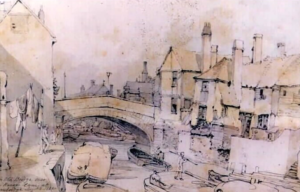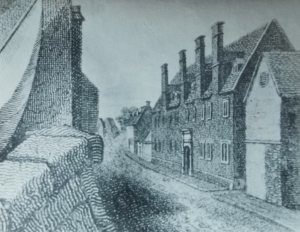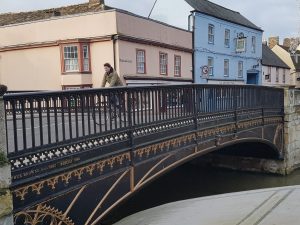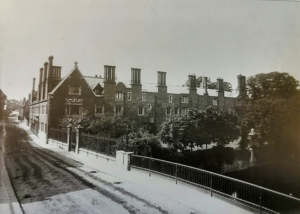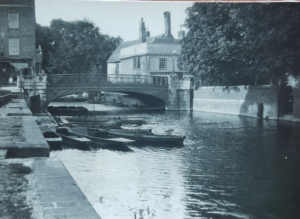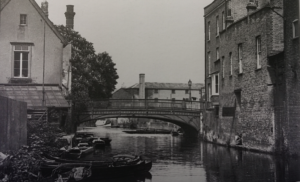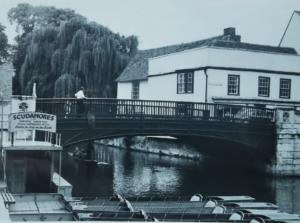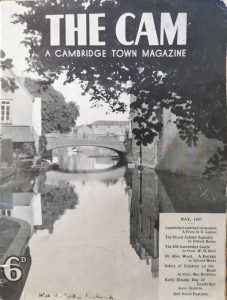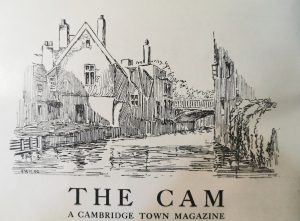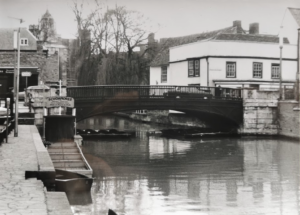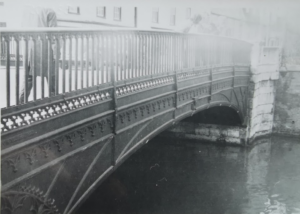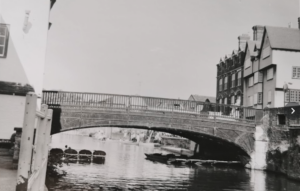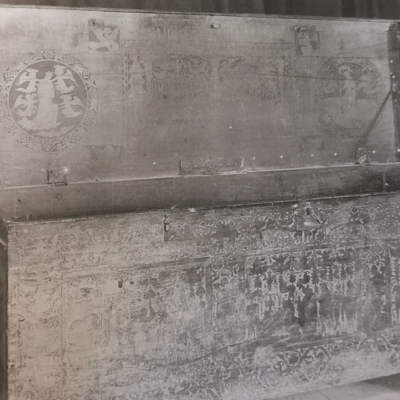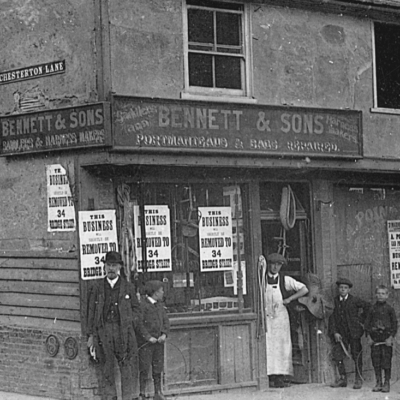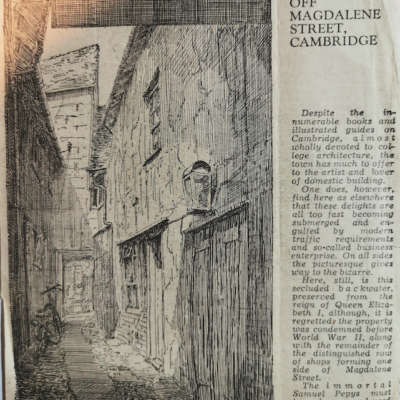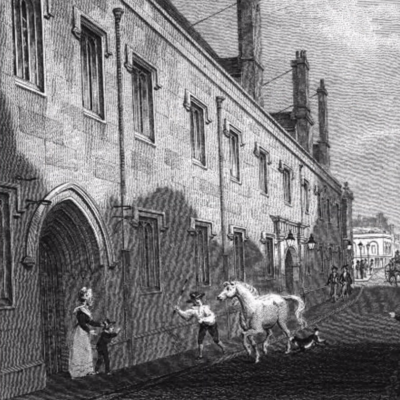Search by topic
- archaeology
- Building of Local Interest
- chapel
- charity
- church
- crime
- dressmaker
- fire
- Great Eastern Railway
- Listed building
- Mapping Relief
- medieval
- oral history
- poverty
- Public House
- Religious House
- Roman
- scholar
- school
- Then and Now
- tudor
- women
- work
- world war one
- world war two
Search by text
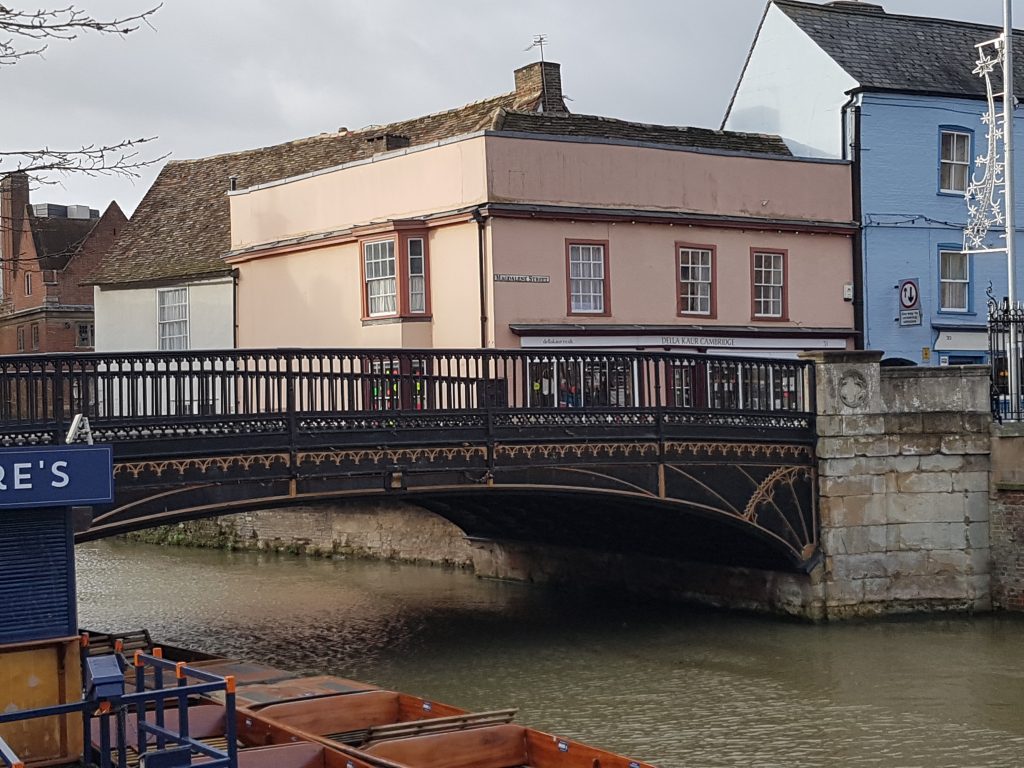
Great Bridge / Magdalene Bridge
History of Great Bridge Cambridge
Peter Bryan ( “Cambridge – The Shaping of the City” 2008) notes that it is likely that the two settlements, one in the perimeter of the old Roman fort on the north of the river, and the settlement around the Market Hill area, the meander settlement, could well have been united as one town after King Penda’s military victory in 634. One hundred years later the Mercian king Offa (756-793) is very likely to have been responsible for the building or rebuilding of a bridge to connect the two parts of the town. Bridges were very rare at this time and the 875 reference to ‘Grantabrycge’ in the Anglo-Saxon Chronicle is remarkable.
Situated on the ancient crossing site, the cast iron and ashlar bridge has the letters ‘Arthur Browne Archt. 1923’. The engineer Benjamin Brown also contributed. The main sections were cast at Derby. Total cost was £2,350.
In medieval times only landowners west of the Cam were liable for the upkeep of the bridge. Bridges at this time were repeatedly repaired and rebuilt; the last timber bridge was replaced in 1754 by one in stone designed by James Essex. (see 1959 Royal Commission on Historical Monuments Survey of Cambridge)
The 1831 New Guide to Cambridge states that ‘in 1275 the Bridge at this spot was in a ruinous state and was probably soon after rebuilt. It is recorded that a Bridge was rebuilt here, in 1482, at the expense of the owners of what are called the postage lands, and that another Bridge was built in 1754, by subscription, when the remains of a bridge supposed to be of Roman construction were discovered.’
4/11/1926: No little excitement was caused when an undergraduate, fully-clothed and wearing cap and gown, jumped off the Magdalene Bridge into the river, using an umbrella as a parachute. A film record of the exploit was taken by Lord Burghley, the famous athlete, who had his baby film camera mounted on the top of his motor car. The undergraduate, being hard up, had hit on this idea as a way of getting money and has netted enough to keep him for a week or two in pocket-money (Cam.News)
31/3/1930: Perhaps fired by childhood memories of Blondin, the famous tightrope walker, a young man attempted the perilous crossing of the River Cam in the wee small hours of the morning.Unfortunately his skill and possibly his sobriety were not equal to his enthusiasm. He first demonstrated his agility by climbing the lamp-post at the end of the bridge then wandered three paces along the parapet of Magdalene Bridge before sliding gracefully into the watery depths beneath. Although able to swim he was exhausted by the time he reached Quayside and it took the combined efforts of his companions and a policeman to get him out, wetter but slightly more sober. (Cam.News)
In 1822 there was a replacement bridge of revolutionary design including ornamental railings cast by the Finch foundry in Cambridge. Their strength was tested in 1929 when a motor car crashed through them and hung over the river. By then the bridge was carrying far more traffic than ever intended. In 1953 a weight restriction was imposed but by 1967 there was a 2in dip in the centre. Buses and lorries were banned and the Government announced plans to replace it by 1971. However opposition prompted a change of heat and the bridge was remodelled retaining its original appearance. (Vanishing Cambridge, Mike Petty)
Contribute
Do you have any information about the people or places in this article? If so, then please let us know using the Contact page or by emailing capturingcambridge@
License
This work is licensed under CC BY-NC-SA 4.0





